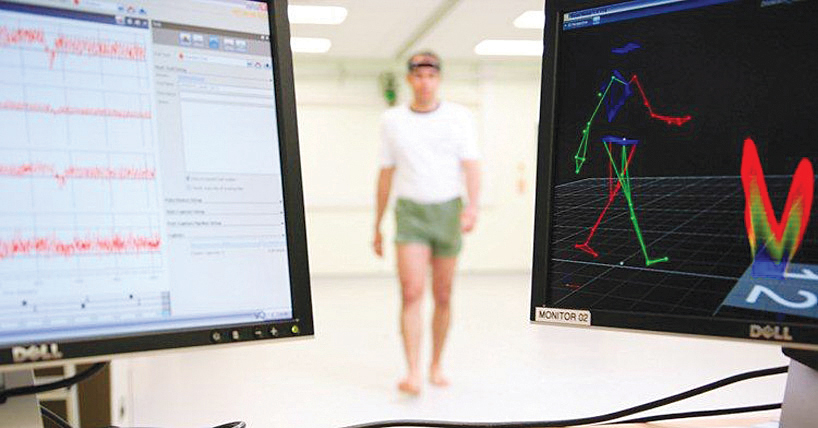
A low-cost wearable sensor used to assess a person’s gait may help detect and monitor Alzheimer’s disease, according to research led by scientists at Newcastle University.
In the study, published in the Journal of Alzheimer’s Disease, 120 patients with early Alzheimer’s, who were recruited from six academic medical centers around the world, wore a small sensor on their lower backs while carrying out walking tasks in the laboratory.
They then wore the sensor for a week at home, carrying out everyday tasks.
The researchers found the sensor provided comprehensive and clinically appropriate diagnostic measures for walking behavior and pattern, as well as gait characteristics related to pace, timing, variability and asymmetry of walking.
“The clinical use of body-worn sensors in annual health assessments could track gait changes over time and act as a red flag for cognitive impairment,” said the study’s lead author, Lynn Rochester, Ph.D., professor of human movement science at Newcastle University.
“Free-living gait analysis at home is particularly useful as it allows objective observation of an individual’s day-to-day activity. It also has the benefit of providing continuous data over a prolonged period of time that may be more sensitive than one-off assessments.”
Previous research has found that changes to the brain begin to occur as early as 10 to 20 years before symptoms arise. If experts can identify the biomarkers present in this very early stage, there may be the chance of treating the disease earlier, which is vital to prevent damage to people’s memory and thinking, Rochester said.
“The ability to assess gait and walking behaviors in all aspects of life is a major step forward in dementia research,” she explained.
From the June 01, 2018 Issue of McKnight's Long-Term Care News



